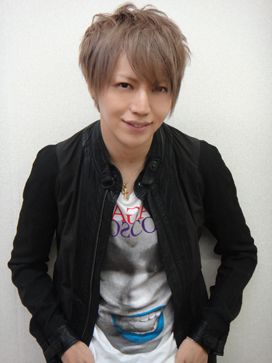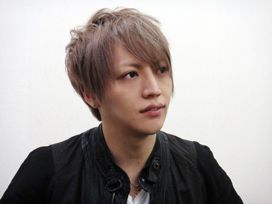One of the most memorable moments of my work in cultural diplomacy thus far was my 11 night, 14 day tour of four Brazilian cities (San Paolo, Rio de Janeiro, Recife, Brasília) in November 2011 with the then Kawaii Amabassador, Misako Aoki.
Following on from this, I’ve written about my various episodes with the members of Ancafe and Morning Musume on a number of occasions here on asianbeat. One day I’ll meet with Alice Nine too. I always knew it would happen eventually and it’s mostly thanks to Twitter that we were finally able to meet.
One day when I tweeted the NHK World music program, “J-MELO,” top five ranking of Japanese artists most requested to be played by overseas listeners, I saw that one of the people who retweeted me was Alice Nine vocalist, Shou (and he even became a follower of mine as well). Ranking in the top five were: #1 the GazettE, #2 Arashi, #3 L’Arc-en-Ciel, #4 Morning Musume, #5 Alice Nine. So I sat down with Shou and we talked away as though we were trying to make up for all the time lost before we finally met. Talking with Shou, I came to realize what a strong ally I have in Alice Nine and why they’ve been able to establish such a strong following throughout the world. It seems such a shame to sum it all up in one article so for the next two weeks (this article and next) I will be bringing you my exclusive interview with Shou of Alice Nine.
One day when I tweeted the NHK World music program, “J-MELO,” top five ranking of Japanese artists most requested to be played by overseas listeners, I saw that one of the people who retweeted me was Alice Nine vocalist, Shou (and he even became a follower of mine as well). Ranking in the top five were: #1 the GazettE, #2 Arashi, #3 L’Arc-en-Ciel, #4 Morning Musume, #5 Alice Nine. So I sat down with Shou and we talked away as though we were trying to make up for all the time lost before we finally met. Talking with Shou, I came to realize what a strong ally I have in Alice Nine and why they’ve been able to establish such a strong following throughout the world. It seems such a shame to sum it all up in one article so for the next two weeks (this article and next) I will be bringing you my exclusive interview with Shou of Alice Nine.

“The roots of visual-k can be found in hard rock, which is a completely Western born genre. Japanese people tried to replicate the style and what was born in the process was a completely Japanese interpretation of the genre. We, the next generation, then took what these pioneers had created and it became what we’ve come to accept today as “visual-k.” The rest of the world then came to accept the uniquely Japanese fashions and musical stylings of visual-k as completely new style of music.”
I’ve once even put this question out to people via my Twitter account: “What’s more important to visual-k: music or fashion?” And most of the replies that came through said the same: “Both. They’re both important; you can’t have one without the other.” It is already widely agreed that the anime and manga form the foundations of people’s passion for Japanese culture throughout the world. Young people everywhere first develop an interest in Japan through these media and then progress to other fields, such as music and fashion.
I’ve once even put this question out to people via my Twitter account: “What’s more important to visual-k: music or fashion?” And most of the replies that came through said the same: “Both. They’re both important; you can’t have one without the other.” It is already widely agreed that the anime and manga form the foundations of people’s passion for Japanese culture throughout the world. Young people everywhere first develop an interest in Japan through these media and then progress to other fields, such as music and fashion.

“The affinity between visual-k and anime has grown even stronger in the 21st century and I think that has also played a big part. Works like “Akira” and “Ghost in the Shell,” have drawn such high acclaim, and there are positive elements found in anime that closely tie-in with visual-k.”
With the proliferation of broadband internet, Japanese culture spread to the far reaches of the world and its consumption intensified through the activities of all the online Japan fan communities.
With the proliferation of broadband internet, Japanese culture spread to the far reaches of the world and its consumption intensified through the activities of all the online Japan fan communities.
“The initial stages of this Japan fever probably only began with a small number of die-hard fanatics, but it’s these such people who have the strongest desire to want to share their passions with others. And that’s where the use of the internet really excelled.” There are young people everywhere who use various net tools to share their love for Japanese culture with the world and I’m reminded of this fact everyday on facebook and on Twitter. Just as their presence is an important asset to Japan, Alice Nine is an important bridge between them and Japan.



Niciun comentariu:
Trimiteți un comentariu